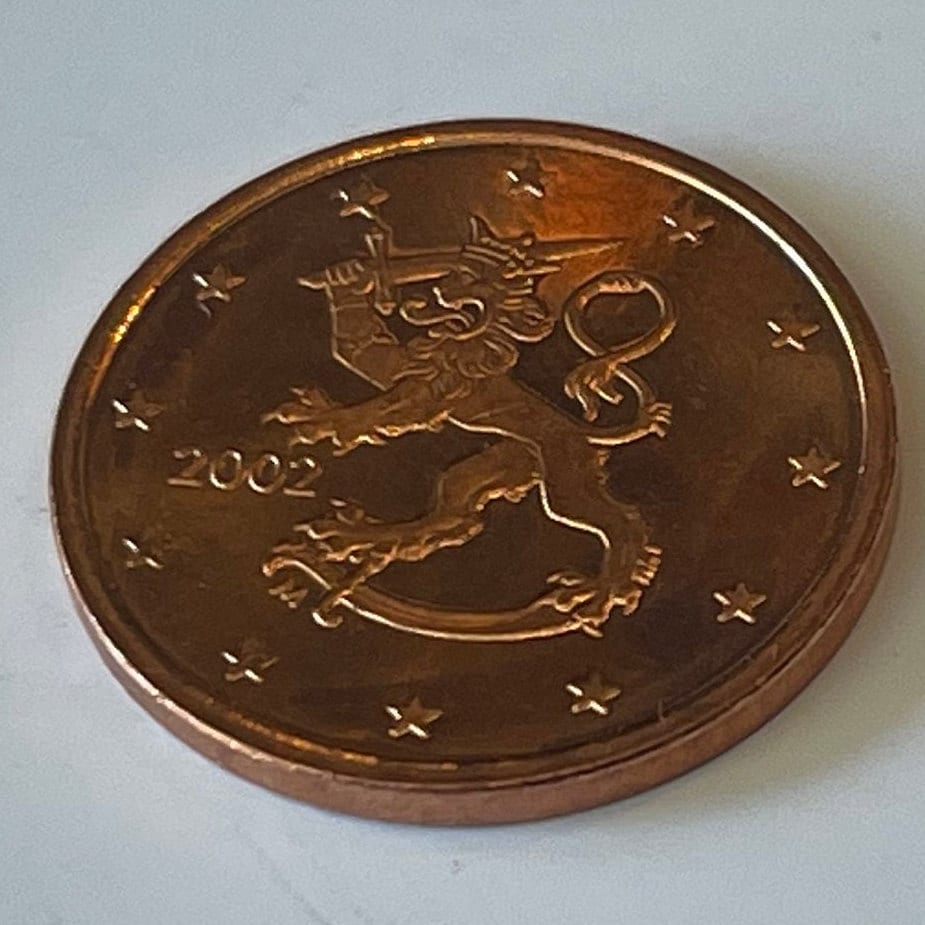elemintalshop
Heraldic Lion w/Sword 5 Euro Cents Finland Authentic Coin Money for Jewelry and Craft Making
Heraldic Lion w/Sword 5 Euro Cents Finland Authentic Coin Money for Jewelry and Craft Making
Couldn't load pickup availability
Heraldic Lion w/Sword 5 Euro Cents Finland Authentic Coin Charm for Jewelry and Craft Making
Obverse
The Finnish heraldic lion is encircled by the twelve stars of Europe
Lettering: 2000 M
Engraver: Heikki Aulis Häiväoja
Reverse
A globe, next to the face value, shows Europe in relation to Africa and Asia
Lettering: 5 EURO CENT LL
Features
Issuer Finland
Period Republic (1919-date)
Type Standard circulation coin
Years 1999-2006
Value 5 Euro Cent
0.05 EUR = 0.06 USD
Currency Euro (2002-date)
Composition Copper plated steel
Weight 3.92 g
Diameter 21.25 mm
Thickness 1.67 mm
Shape Round
Orientation Medal alignment ↑↑
Number N# 91
References KM# 100, Schön# 101
Wikipedia:
The heraldic lion is quite common in Western Europe, and several European countries incorporate it into their national coats of arms. In Nordic heraldry, the lion is first found in the coat of arms of Denmark in the later part of the 12th century.
Starting in the 13th century, the territory of today's Finland was gradually incorporated into the Swedish kingdom, and this coincided with the period when coats of arms first came into use in northern Europe. The first known use of the lion in Sweden was on the royal seals of Erik Knutsson (died 1216) and Erik Eriksson (1216–50), who used two and three lions on their seal, respectively. The first king of the Folkunga family, Valdemar Birgersson (1239–1302), also used 3 lions on his seal (Figure 2).
Finland as a duchy
Figure 3: Folkunga coat of arms
Figure 4: Seal of duke Valdemar
Bengt Birgersson, the first Duke of Finland (1254–91, Duke from 1284 until 1291), and Valdemar Magnusson, the second Duke (died 1318, Duke of Finland from 1302 until 1317), both used the later Folkunga coat of arms, which was a crowned lion rampant with three bends sinister, the main difference being that Valdemar's arms had the field strewn with hearts (Figure 3). This version of the arms was quite similar to the modern coat of arms of Finland, but the lion did not yet brandish any weapon.
Share



















